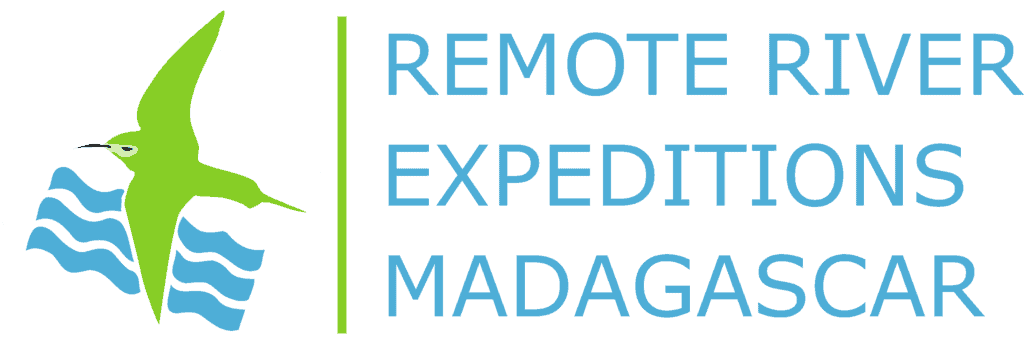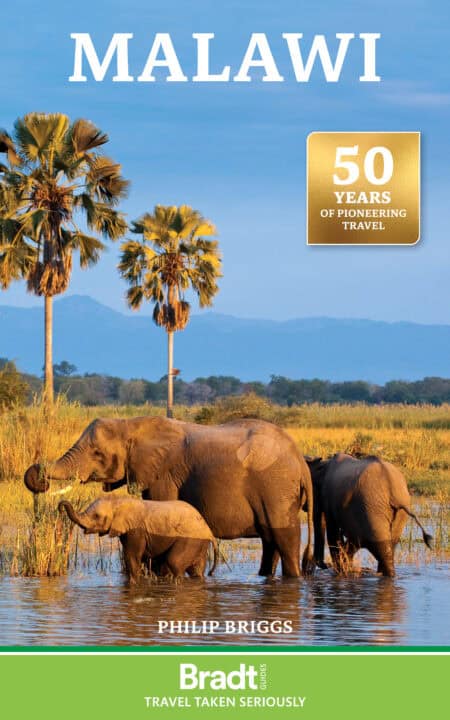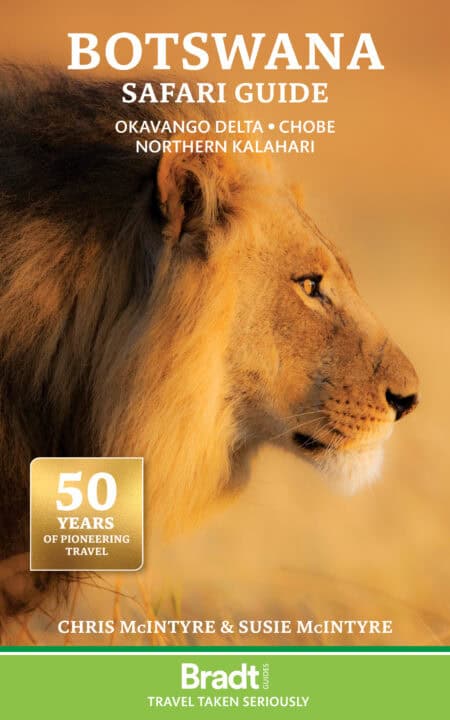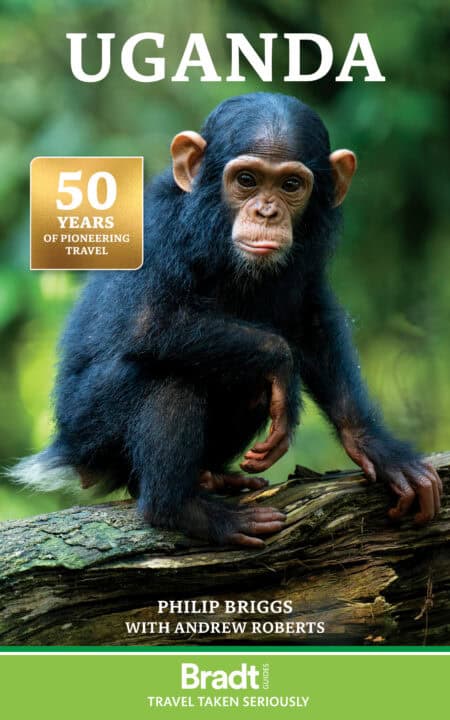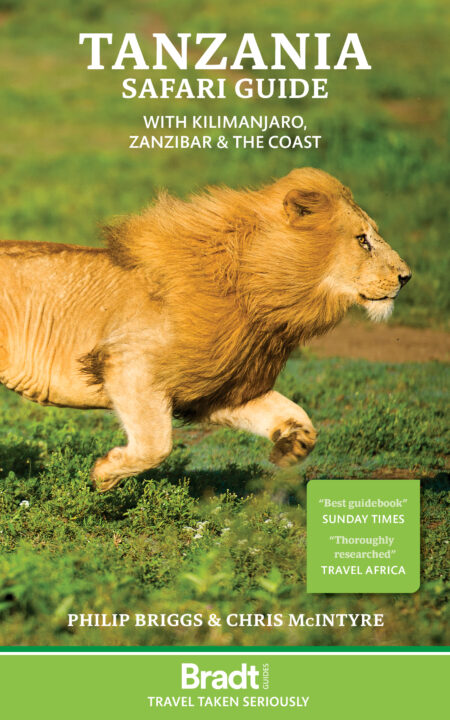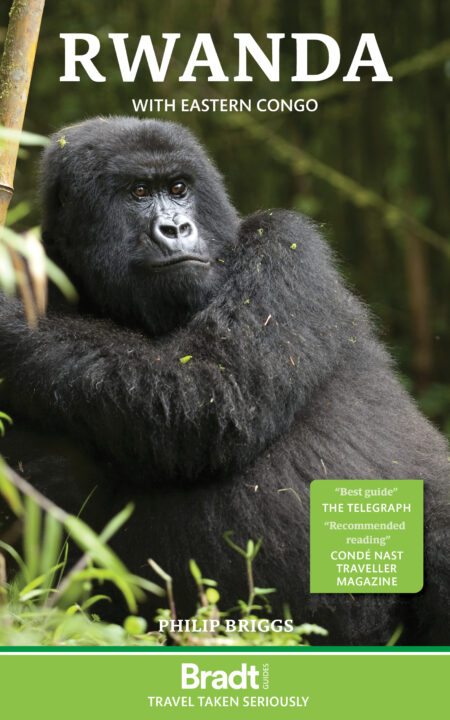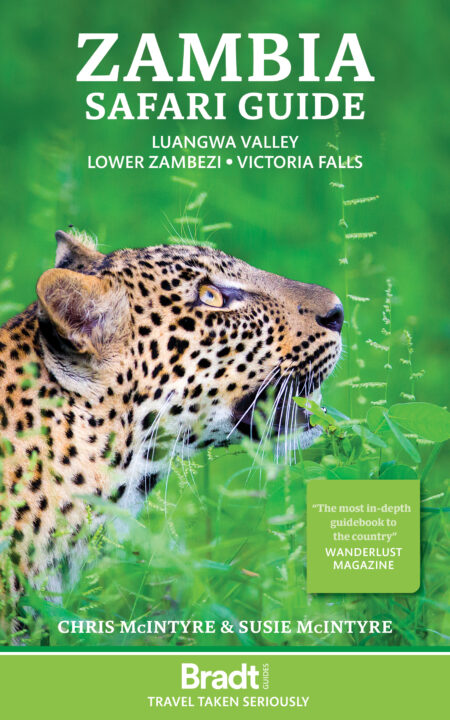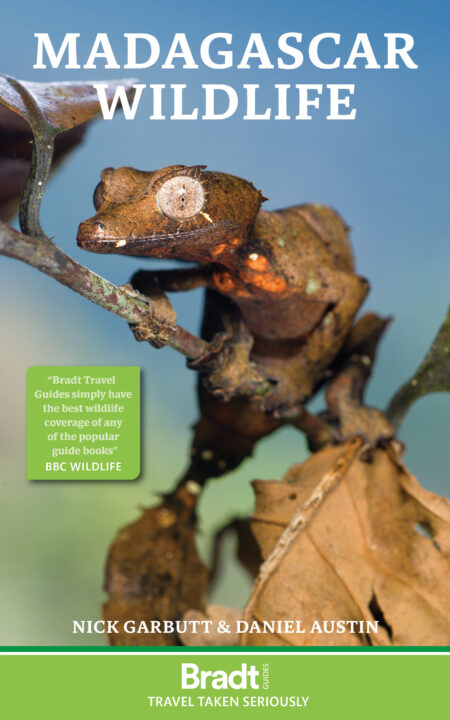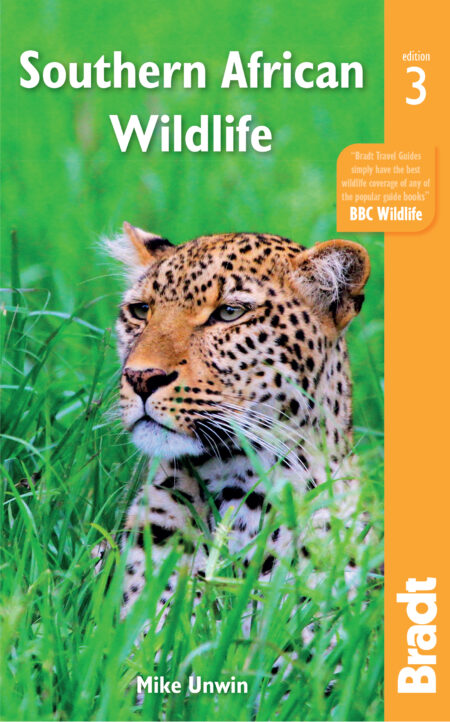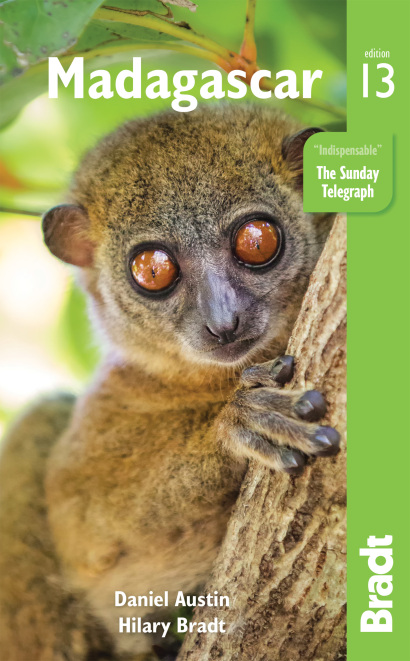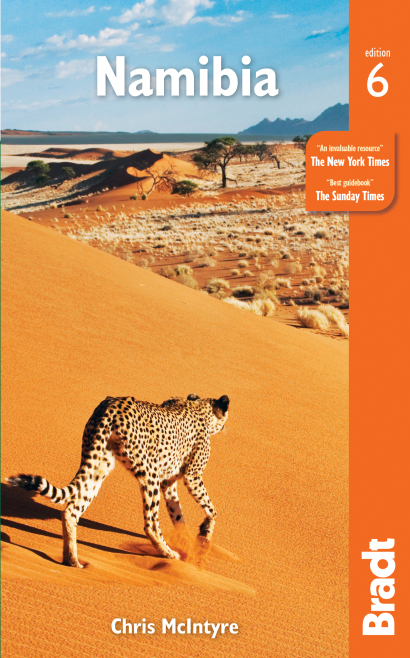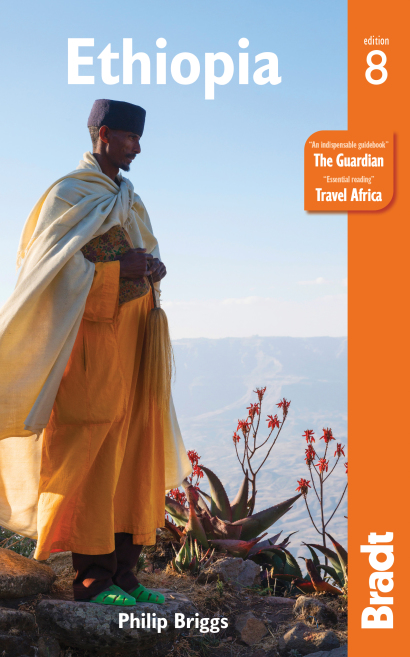Experiencing an epic safari in Africa is about more than crossing an item off your bucket list. Safaris draw you into the soul of the wild – where savannahs stretch to the horizon, jungles pulse with life, and the open sky tells stories untouched by time.
We understand that planning an adventure like this can feel daunting. That’s why we’ve curated a selection of Africa’s top safari locations. Some are iconic, while others may surprise you.
This list is not ranked in order of recommendation. You’ll find blockbuster safari destinations sitting above or below some more unexpected choices – the sort of ‘offbeat’ selections that we have always been known for encouraging travellers to consider – but each one invites you to roam, observe remarkable wildlife, and expand your idea of what’s possible.
Welcome to Bradt’s collection of the best safaris in Africa.
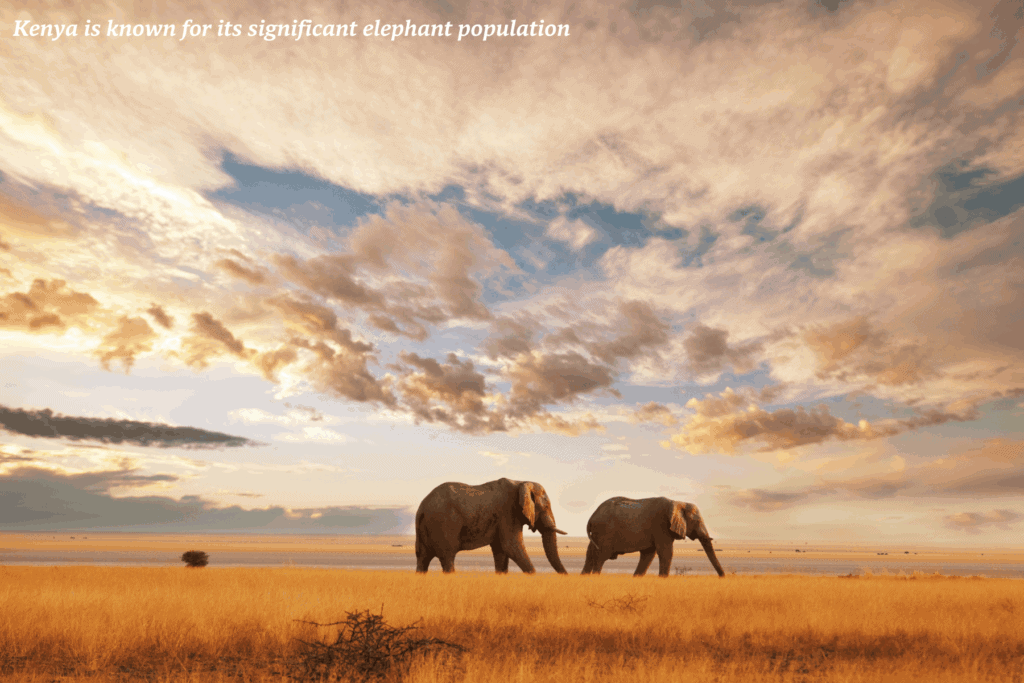
The best safaris in Africa
Kenya – landscapes as diverse as they come
Kenya promises stunning landscapes and prolific wildlife. The game reserves are Kenya’s biggest draw: the Masai Mara is where millions of wildebeest cross the Mara River, and Kenya’s lakes are often fringed with flamingos, creating striking pink shorelines. Right now, Lakes Elementaita and Bogoria are among the best places to witness this spectacle, while Lake Nakuru can see large seasonal gatherings if conditions are right. Elsewhere, the desert reserve of Samburu is the place to see ‘unusual’ desert-adapted wildlife such as Grevy’s zebra, the boldly marked reticulated giraffe and the long-necked gerenuk antelope.
Amboseli National Park offers some of the best elephant viewing in Kenya. Home to large numbers of African elephants, visitors can expect close encounters with herds of up to fifty at a time, making it an ideal destination for wildlife enthusiasts and photographers alike.
Hemmed in by the Indian Ocean beaches of the Swahili Coast, overlooked by the sensational snow-capped peaks of Mount Kenya and Kilimanjaro, and scarred by the mile-deep continental schism that is the Great Rift Valley, Kenya is a land of exceptional scenic variety and beauty. Where will your explorations take you?
Focused solely on this region? Here are our top wildlife picks in East Africa.
How to do it
Planning a safari in Kenya doesn’t have to be daunting if you do your research. The best time for game viewing is the dry season starting in late June, when the wildebeest migration centers on the Masai Mara – usually crossing from the Serengeti in July or August and grazing the plains until October. While August to October can be tough for many large mammals, it’s ideal for spotting them as they gather around water sources.
Nairobi is East Africa’s travel hub, with Jomo Kenyatta Airport serving many international flights, including British Airways and Emirates. Domestic flights to safari destinations depart from Wilson Airport, closer to the city centre.
Once there, a variety of safari options are available, with the best choice depending on your interests, temperament, and budget.
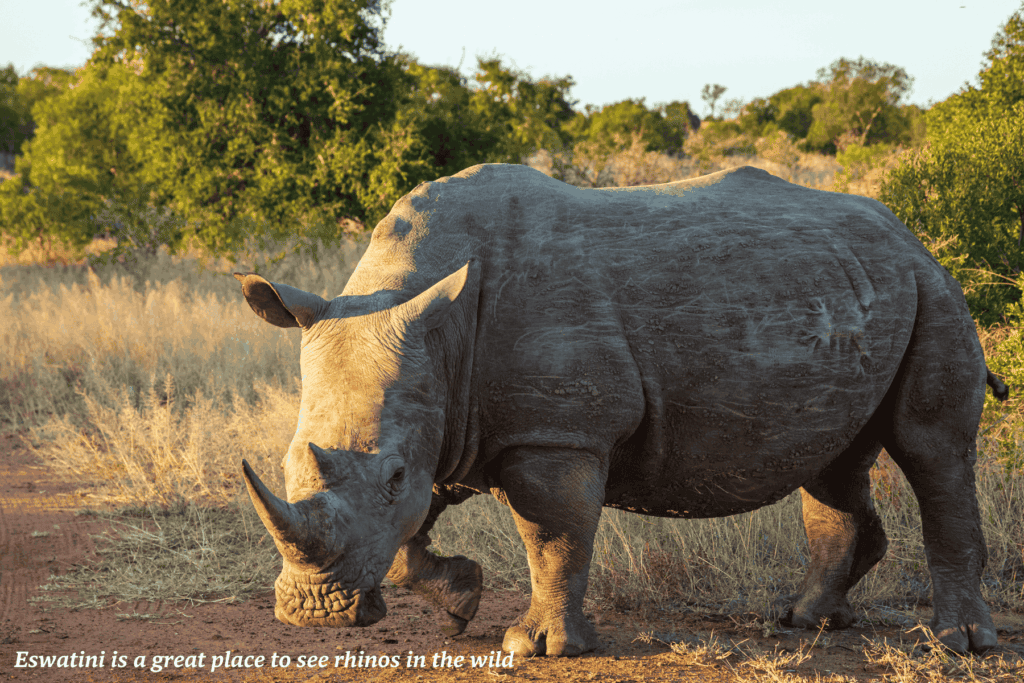
Eswatini – discover ‘Africa in miniature’
Ok, Eswatini doesn’t usually spring to mind as a bucket-list safari spot. Certainly, other countries have more established safari circuits. But Eswatini encapsulates Africa in a nutshell – safe, welcoming, and full of unforgettable wildlife experiences. This oft-overlooked nation is ideal for first-time visitors to the continent, families seeking meaningful adventures, self-drive enthusiasts, and anyone with a passion for walking safaris.
Safari hotspots are widespread. At Mlilwane Wildlife Sanctuary – the oldest protected area in the country – visitors can walk amongst zebras and antelope before retiring to beehive huts that encapsulate the feeling of traditional EmaSwati homesteads.
In the vast bushveld of eastern Eswatini lies the country’s largest protected area: Hlane Royal National Park. Under the hot, still sun of Africa, you’ll encounter some of the Kingdom’s impressive game herds and fall asleep to the distant sounds of the bush, perhaps even the occasional roar of a lion. Renowned as one of the best places in the world to see white rhinos, Hlane also offers an opportunity to track these magnificent animals on foot, guided by experienced rangers.
Finish your trip at Mbuluzi Game Reserve, where travellers can walk with giraffes and keen birders can spend hours tracing the 300 species of bird reported to live on the reserve’s grounds.
Eswatini is a place offering breathtaking landscapes and intimate wildlife encounters, as well as strong cultural traditions.
How to do it
Choosing when to visit Eswatini comes down to personal priorities. This is not one of those African destinations where the seasons force your hand: most roads are perfectly navigable all year round and the wildlife does not all exit the country at certain times. Tourism numbers peak around the Christmas holidays but the place is never congested.
The dry season, when vegetation dies back and water sources dwindle, is best for game-viewing in the lowveld. But Eswatini’s parks are small, so the game is never hard to find. The rainy season is best for birds, with everything singing and displaying and, from September to March, all the summer migrants – including such rarities as the blue swallow – joining the residents.
There are currently no direct flights from the UK to Eswatini. All routes include a stopover in major African hubs like Johannesburg or Addis Ababa before connecting to King Mswati III International Airport in Sikhuphe.
Sense Earth provides small group holidays and bespoke safaris to Eswatini – an affordable, safe and little-known African safari destination. Experience a self-drive safari for £3900 pp for 13 nights, including flights (from London), accommodation, DBB, guided safaris and park fees. You can find the full details here.
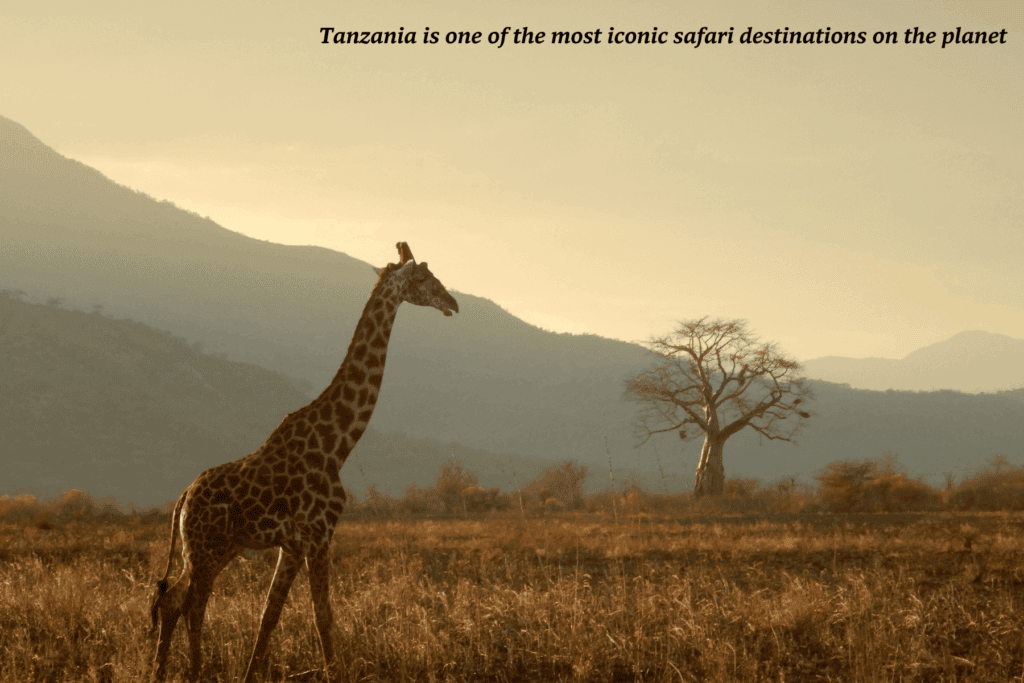
Tanzania – wildlife spectacular!
Tanzania might be Africa’s ultimate safari destination. With roughly a quarter of its area protected in a network of parks that includes the world-famous Serengeti, Tanzania is home to almost half the world’s remaining wild lions, and around one-fifth of Africa’s surviving elephants. Then there are the two million wildebeest and zebra that migrate annually through the Serengeti ecosystem, embarking on the dramatic mass calvings and chaotic river crossings that make it one of the world’s greatest wildlife spectacles.
The Serengeti alone would be sufficient to place Tanzania near the top of most safari bucket lists, but this East African nation is also home to several other world-class wildlife spots.
From the Ngorongoro Crater to the vast sprawl of Nyerere National Park and scenic Lake Manyara at the base of the Great Rift Valley, Tanzania teems with natural wonders. Meanwhile, further west, Gombe National Park – the former stomping ground of Jane Goodall – and Mahale Mountains vie with each other as the top chimp tracking destinations in Africa.
Although the wildlife is the star of the show, the most rewarding trips go beyond safari. Visiting Maasai communities brings a deeper understanding of Tanzania’s traditions, and stargazing under clear night skies offers a spellbinding end to each day.
Need more inspiration? Don’t miss our definitive guide to Tanzania’s national parks.
How to do it
Tanzania offers a variety of safari options, including private tours for more flexibility and small group safaris for shared costs and a social atmosphere. For the best chance to see the Great Migration, plan your visit between June and October. April and May are the wettest months but also the quietest, with lower prices and good wildlife viewing in areas like the south-central Serengeti, Ngorongoro Crater, and Lake Manyara, which remain rewarding year-round.
Kilimanjaro International Airport, located between Moshi and Arusha, is the most convenient gateway for northern safaris. However, flying into Nairobi is often cheaper. From there, it is easy and affordable to reach Arusha via shuttle bus or short flights to Kilimanjaro International. Whether you choose peak season for migration or off-season for value, Tanzania offers excellent game viewing and diverse safari experiences throughout the year.
Shah Tours is one of Tanzania’s most established tour operators, leading expert safaris around some of the country’s highlights. Explore Tanzania’s top wildlife destinations on a 9-day safari from £5545 per person, depending on season and accommodation type.
Visit Serengeti, Ngorongoro Crater, Tarangire, and Lake Manyara in a private or small-group vehicle with an expert guide. Enjoy exceptional wildlife viewing, cultural encounters with the Maasai, and overnight stays in comfortable lodges and camps close to nature. You can find the full details here.
For more information, check out our Tanzania safari guide.
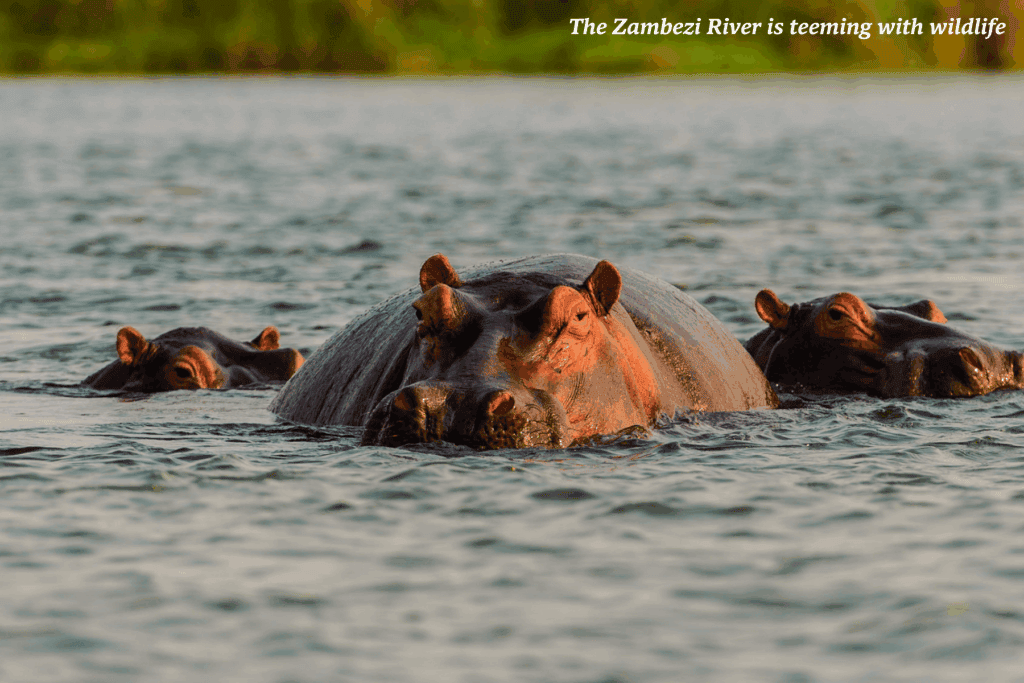
Zambia – get a true taste of the wilderness
Zambia may be increasingly well known as a safari destination, yet the country retains an authentic sense of wilderness: wild, beautiful and slightly unpredictable. In addition to the iconic majesty of Victoria Falls, it is to these remote, scarcely touched areas that most visitors are drawn.
In Zambia’s three main safari destinations – the Luangwa Valley, the Lower Zambezi and Kafue – you’ll find first-class, owner-run camps, superb game and some of the continent’s best guides. You’ll see few other visitors in these places either; most Zambian camps remain intimate and remote, a luxury in an increasingly urbanised world. You’ll travel around using small, open-sided 4x4s, seeing few, if any, other vehicles. You’ll find skilled guides across Africa, but in Zambia, the standard of expertise stands out. Here, you’re in the hands of those who not only keep you safe but also bring the landscape to life with their deep knowledge and intuition.
North Luangwa National Park remains a global conservation success story, with Zambia’s black rhino population now protected through intensive community-backed activity. In Liuwa, efforts to restore biodiversity continue, with Lichtenstein’s hartebeest reintroduced after over three decades of local extinction. Meanwhile, Bangweulu Wetlands leads a global-first initiative to hand-rear critically endangered shoebill storks, combining captive care with community-led nest protection.
To put it simply, there’s never been a better time to go on a safari in Zambia.
How to do it
Zambia’s dry season (May to November) is the best time to visit, with peak safari months from August to October offering clear skies and excellent wildlife viewing. Even at full capacity, the small camps feel uncrowded, and quieter months like May, July, or November often come with lower costs.
Travel from the UK usually involves one-stop flights via hubs like Doha (Qatar Airways) or Dubai (Emirates). In terms of the safari itself, thanks to developments in recent years, Zambia now offers much more than simply superb bushcamps. There is increasing diversity in the accommodation and activities on offer, with cultural interactions, family-friendly safaris and several luxury lodges to compete with the very best in the world. Pioneers have even opened up super camps in offbeat areas and innovators have introduced new technologies to keep the whole industry progressing.
For more information, check out our Zambia safari guide.
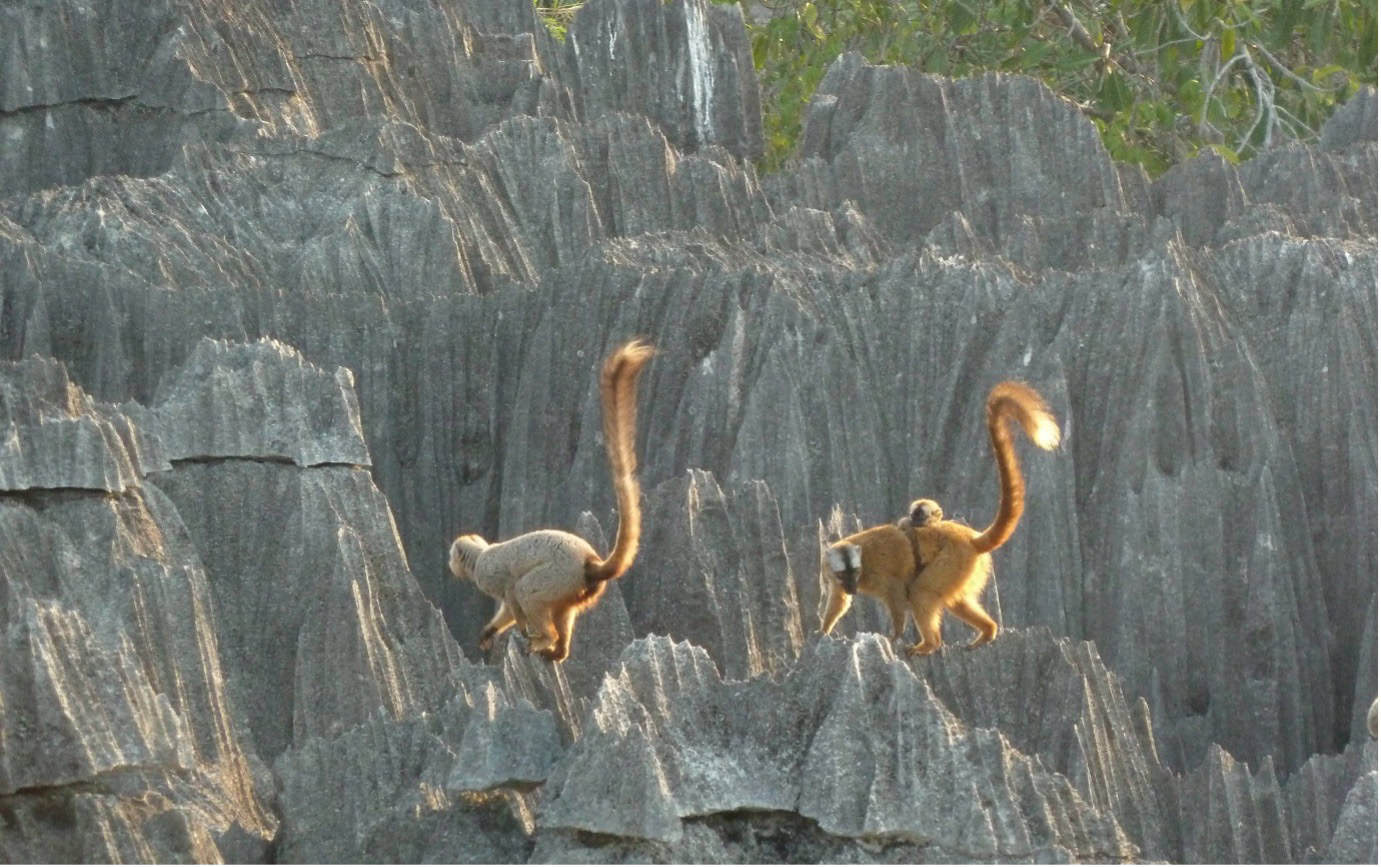
Madagascar – experience the ‘Amazing West’
Madagascar may not be your typical safari destination, but it is one of the world’s most distinctive and lesser-known places.
The Menabe Region in the west is home to many of the island’s greatest treasures, with unique ecosystems, dry forests, and endemic species found nowhere else on earth. Whether you explore by 4×4, river expedition, or scenic flight, western Madagascar promises a safari unlike any other – striking scenery, strange creatures, and rich biodiversity in a land lost in time.
The Kirindy Forest Reserve is one of the treasures of the ‘amazing’ west. A 12,500-hectare dry deciduous forest teeming with life. It is home to an impressive variety of wildlife – including eight species of lemur, the elusive fosa, and the giant jumping rat – and a great variety of endemic bird species.
Nearby, the iconic Avenue of the Baobabs is a must see, and remains one of the most visited sites in Madagascar. These towering Adansonia grandidieri trees – some over 800 years old – are particularly breathtaking at sunrise and sunset. For those with a particular interest in baobabs and other fauna there are also tours that focus on seldom visited trees throughout Madagascar.
Further north lies Tsingy de Bemaraha National Park, a UNESCO World Heritage Site. The surrealist landscape is spectacular, with razor-sharp limestone pinnacles sheltering eleven lemur species, over fifty species of birds and rare reptiles like the stump-tailed chameleon.
Finish your trip in Belo sur Mer, a beachside treasure just south of Morondava dubbed one of the best honeymoon destinations in Africa by The Huffington Post. Peace and quiet are the order of the day in this isolated coastal village. Activities include snorkelling, mangroves and village visits.
How to do it
There are several ways to reach western Madagascar, depending on your interests, timeframe and budget. You can take a domestic flight to Morondava, opt for a charter flight directly to the Tsingy de Bemaraha, or choose a more adventurous route – such as a multi-day canoe trip with riverside camping along the calm waters of the Manambolo or Tsiribihina Rivers.
The best time to visit Madagascar is during the dry season from April through to the end of November, when wildlife is easier to spot and the weather is more pleasant for exploring the island’s diverse terrain. For more options, information and inspiration see our list of the best reasons to visit Madagascar.
It is important to choose a responsible tour operator, as many species on the island are endangered due to habitat loss. By visiting, you can contribute to conservation efforts that protect Madagascar’s fragile ecosystems and help preserve its incredible biodiversity for generations to come.
Remote River Expeditions – Madagascar is based in Morondava, which is the gateway to the ‘amazing’ western region. Since 1985, this small, hands-on company has been creating truly unique vacations that cater to all ages and interests.
The Amazing West! – Madagascar’s Menabe Region © offers an unforgettable journey. Discover the stunning limestone pinnacles of Tsingy de Bemaraha, encounter unique wildlife at Kirindy Forest, and relax on the pristine beaches of Belo-sur-Mer.
Tours range from 3 to 20+ days, with prices starting at £110 per person per day. Half board and full board options.
For more information, check out our guide to Madagascar.
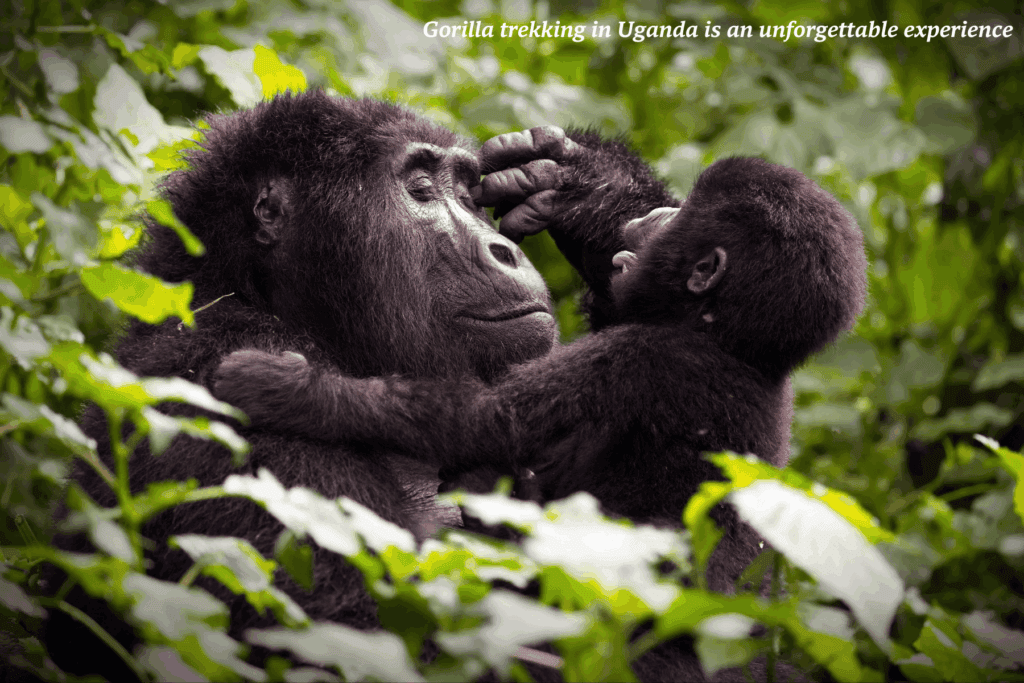
Uganda – take to the forests
Uganda is now a strong conventional safari destination, with a very good chance of seeing all of the Big Five. At the same time, its relatively high proportion of closed-canopy forest (you can find out more about Bwindi Impenetrable National Park in our list of the best forests in the world) makes it an unbeatable destination for viewing African forest creatures – from gorillas and chimps to a colourful array of butterflies and birds – in their natural habitat. The accessibility of its major forests, especially compared to those in West Africa, only adds to its appeal.
Uganda is where east meets west in Africa. East African savannahs, roamed by big game favourites, merge with Congo-style rainforests bristling with primates – including mountain gorillas, golden monkeys, and chimpanzees. These forests also host birds typically associated with the Congo Basin, many of which are found nowhere else in East Africa.
Whatever your area of interest, Uganda abounds in unforgettable activities and encounters. You can track chimpanzees in the depths of tropical vegetation; search for tree-climbing lions on the open Ishasha plains; descend into the hot depths of the Western Rift Valley in search of rare birdlife; fish for a record Nile Perch on the island-studded expanse of Lake Victoria; raft the turbulent headwaters of the Nile and marvel at the great river’s eruption through a 6-metre gap in the rocks at Murchison Falls; visit a traditional homestead on the remote plains of Karamoja; and feel the chill of equatorial snow on the 5,100m Rwenzori Mountains.
Uganda really does have something for everyone.
How to do it
The best time to visit Uganda is between January and February and July until September. If you’re planning on undertaking a gorilla trek, bear in mind that permits are limited and highly sought after, so it’s essential to book well in advance.
Most flights from the UK to Uganda connect through major hubs like Doha (Qatar Airways), Dubai (Emirates), Istanbul (Turkish Airlines), Addis Ababa (Ethiopian Airlines), or Nairobi (Kenya Airways).
Since few major urban centres lie more than 5-6 hours’ drive from the capital, flying has never been an option for most people, though some more upmarket safaris now use flights to cut the driving time between Murchison Falls National Park and Queen Elizabeth or Bwindi Impenetrable National Parks. The only destination in Uganda that is reached by air almost as often as it is by road is Kidepo Valley National Park, since the drive up from Kampala cannot be accomplished easily in one day.
For more information, check out our Uganda guide.
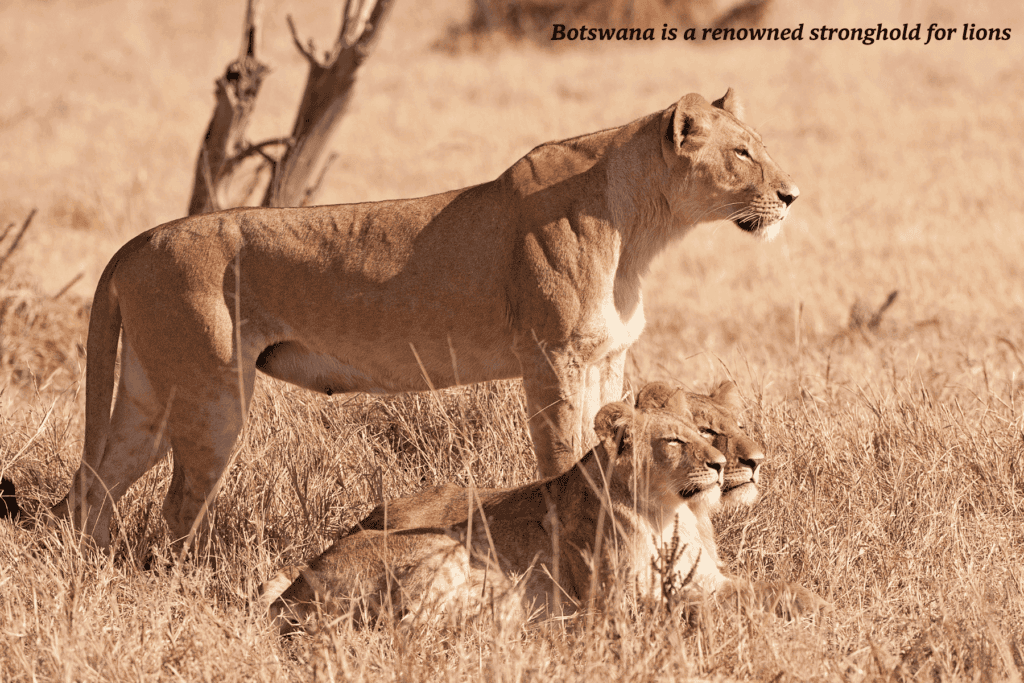
Botswana – keep your eyes peeled for the small stuff
Botswana has three overriding attractions as a world-class safari destination: stellar wildlife, seemingly endless space and the richest of histories.
Top of most visitors’ lists is the wildlife. Whether this is your first safari or your 50th, Botswana will not disappoint. The sheer diversity of the country, from the arid Kalahari to lush, well-watered forest glades, ensures tremendous variety. Botswana is serious about its ‘big game’. It has spectacular herds of elephants and buffalo, and prolific populations of predators.
Off-roading on vast private reserves, safari enthusiasts can bounce across the bush while watching a pack of wild dogs on the hunt; Botswana has probably the continent’s best population of these highly endangered predators. Impressive prides of lions and groups of cheetah roam across much of the country’s north. Yet often it’s the country’s smaller residents that captivate: tiny painted reed frogs on sedges, barking geckos and curious meerkats that stand upright to scan the horizon.
In Botswana, animals wander freely across vast reserves that are measured in thousands of square kilometres, not merely hectares. Exploring these wilder corners is liberating, thrilling and invariably unforgettable.
How to do it
Most people visit during the dry season, from around May to the end of October. The period from mid-July to mid-October is definitely the busiest – although Botswana’s small camps and private reserves ensure that it never feels crowded, even when everywhere is full.
The vast majority of visitors fly via the gateways of Maun, which has an international airport, and Kasane, which is more effectively serviced by the nearby airports at Victoria Falls and Livingstone.
Most who come for a few weeks’ safari fly between a series of remote safari camps; this is by far the easiest and most popular way to visit the country. Combinations of the Okavango Delta, and the Kwando-Linyanti and Chobe areas are most common. These trips are not difficult to arrange for a knowledgeable tour operator. If you have a favourite camp or operation, or will be running to a tight schedule, then book as far ahead as you can. Eight to ten months in advance is perfect. Bear in mind that most camps are small and thus easily filled.
For more information, check out our Botswana guide.
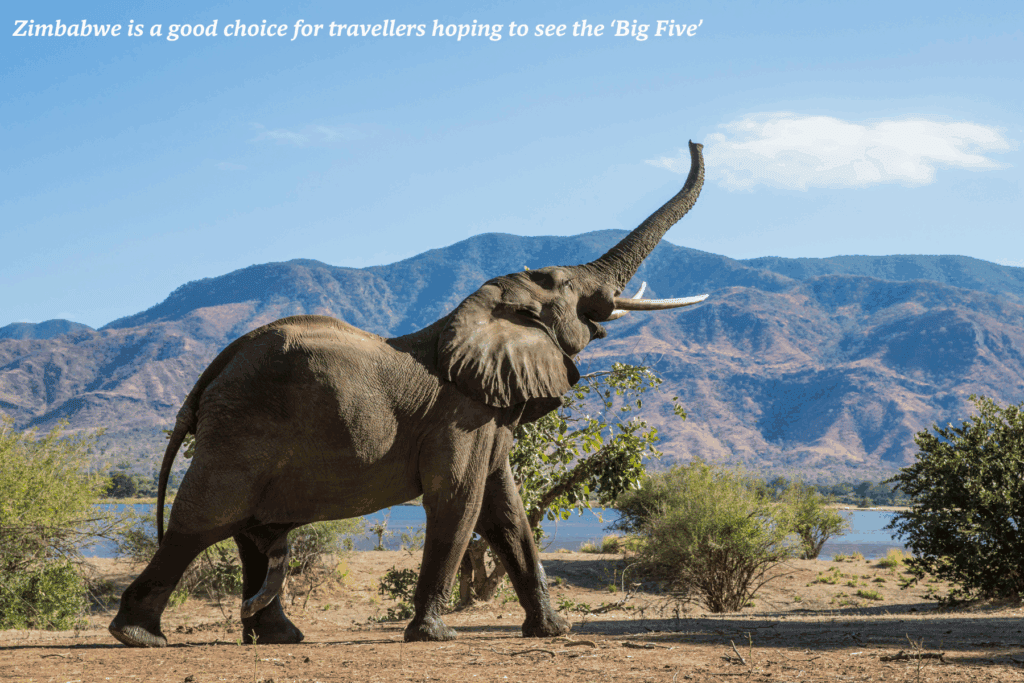
Zimbabwe – big game, big thrills
Zimbabwe has abundant and free-roaming game, which means a memorable visit is guaranteed. Here you’ve the chance to follow your guide for a close-up view of a group of giraffe or maybe some lions lazily contemplating their next move; sit quietly in your vehicle surrounded by a herd of rumbling elephants; or spot a pack of painted dogs. And while you’re here, don’t miss the spectacular Victoria Falls – a breathtaking natural wonder that perfectly complements your safari adventure.
If this will be your first experience of big game and you want to see as many different animals as possible, head first for the popular and easily accessible Hwange National Park, where there is a huge diversity of game in prolific numbers. Other good national parks include Mana Pools, Matusadona and Gonarezhou.
The latter two are considered rather remote so are visited far less often, resulting in a wonderful ‘all-to-ourselves’ experience for those who do visit. Other parks, while scenic and often much less visited, generally have lower concentrations of animals and tend to cater for people who have been wildlife viewing before and want to experience some of the last accessible, true wilderness destinations in Africa.
- Recommended reading: the most impressive rock art in Africa
How to do it
To maximise wildlife viewing, the dry, winter months of July-October are the best time to visit. In the dry season, natural water sources become scarce in the bush, encouraging game to congregate around a relatively small number of artificially pumped pans or waterholes near lodges and specific game-viewing areas.
It isn’t possible to fly directly to Zimbabwe from Europe, but Ethiopian Airways and Kenya Airways fly daily into the country, with flights between Harare and Addis Abba, and Harare and Nairobi respectively.
Broadly speaking there are three ways of booking your game drives: either directly with the camp or lodge you are staying at, by using an agent, or by hiring a private guide. Each offers a rather different experience, so it is important to determine your priorities before you start booking. If you’re looking for something unique, Zimbabwe has an excellent selection of canoe, horseback and walking safaris available for visitors seeking a more personalised experience.
For more information, check out our guide to Zimbabwe.
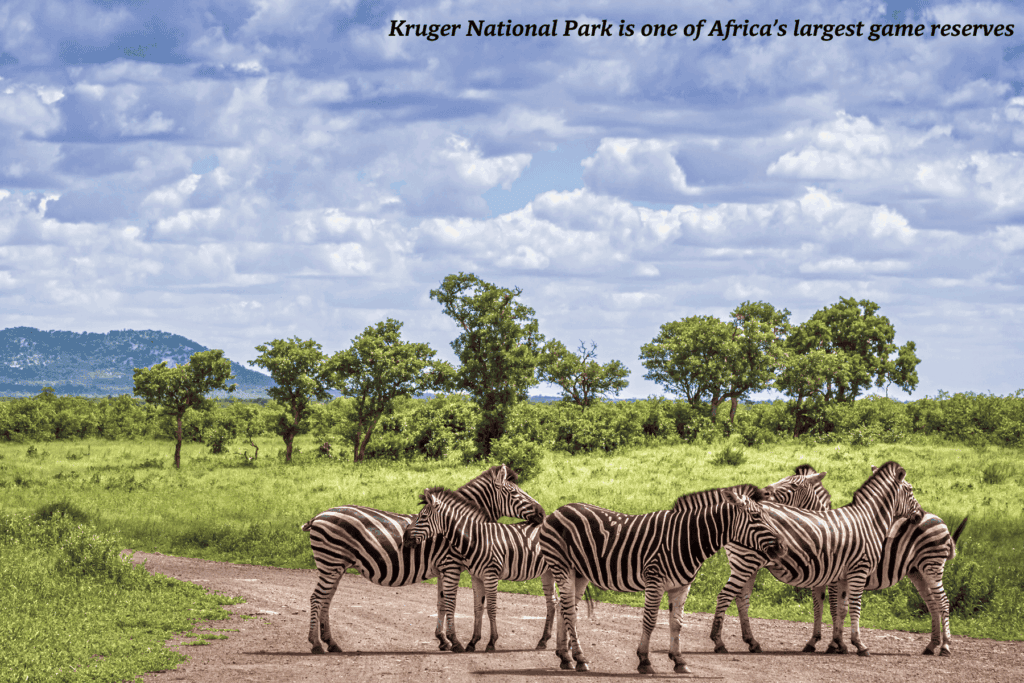
South Africa – on the track of lions
South Africa is often called ‘a world in one country’. Whether you are talking about wildlife, culture or its dazzling array of landscapes, South Africa is truly a country of inspirational variety.
It is renowned for its diverse and prolific wildlife, which is protected in a network of around 500 conservation areas, ranging from vast national parks such as Kruger or Kgalagadi to smaller local reserves protecting niche pockets of indigenous forest, mangroves and freshwater marshes.
The guaranteed showstopper on a South African safari, the lion, is Africa’s largest terrestrial predator, weighing up to 220kg, and is present in several South African parks and reserves, notably the Greater Kruger, which hosts a population estimated between 1,500 and 2,000.
More interested in leopards? The Sabi Sand cluster of reserves bordering the south-central Kruger is easily the best destination in Africa for viewing these normally elusive creatures.
Elsewhere, Madikwe Game Reserve delivers classic Big Five sightings – lion, leopard, elephant, rhino, and buffalo – alongside wild dogs and cheetahs in a striking landscape of plains and hills. iSimangaliso Wetland Park offers a unique mix of safari and coast, with hippos, crocodiles, and flamingos all frequently spotted by visitors, plus opportunities for snorkelling and turtle watching on unspoiled beaches.
How to do it
If game viewing is your top priority, then the time to be in South Africa is during the dry winter months, which offer the best conditions for spotting wildlife.
OR Tambo International Airport is the busiest flight hub in southern Africa. It has direct connections to most European and African capitals, as well as to the Americas, Asia and Australia. A limited number of international flights land at Cape Town International, Kruger Mpumalanga and Durban’s King Shaka airports, which are often more convenient options for those with no specific reason to pass through Johannesburg.
A choice that you will need to make when planning your trip is whether to book through a local ground operator or a tour agency at home. By using an agent in your home country, you can plan an itinerary face to face, you may well get a cheaper flight to South Africa and payment is more straightforward. Booking a package through an unbonded South African operator will usually be cheaper, but you will be less well protected in the event that something goes wrong.
However you book, the price of a safari is almost always inclusive of accommodation and/or camping gear, services of a vehicle and driver-guide, and all meals, park fees and pre-arranged activities.
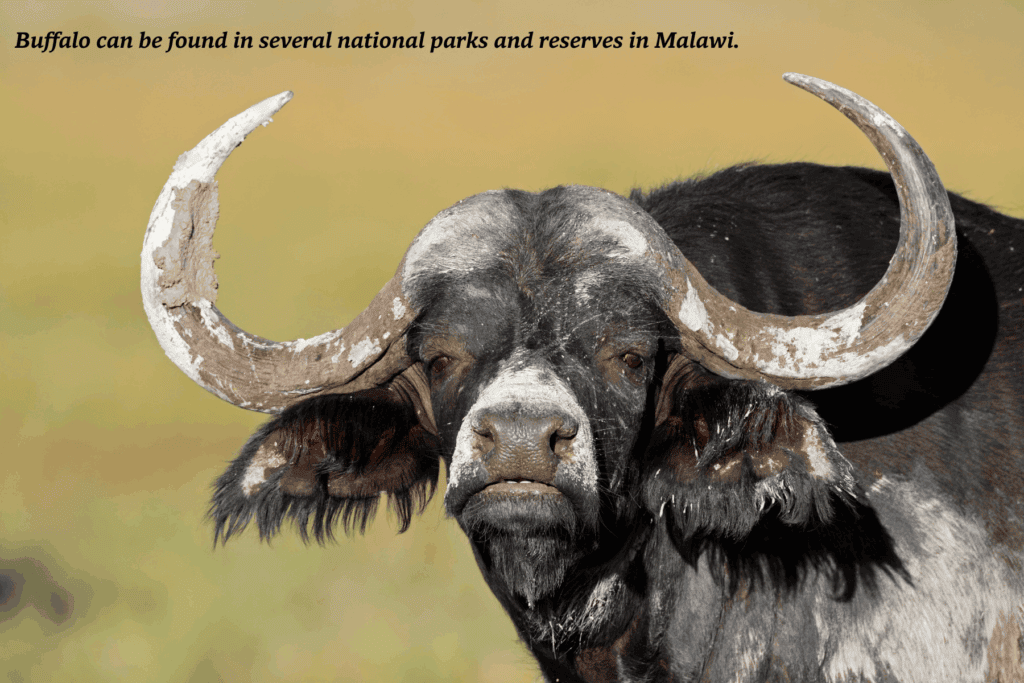
Malawi – wildlife bouncing back
Although Malawi may lack the vast wildlife reserves of East Africa, the management of key national parks by African Parks – a non-profit conservation organisation that takes on direct responsibility for the rehabilitation and long-term management of protected areas – has seen a huge resurgence in animal numbers, making it an outstanding and low-key destination for wildlife lovers.
Liwonde National Park is arguably the best overall safari and birdwatching destination in Malawi. Extending over 548km, the park is dominated by the sluggish Shire River and its lush fringing vegetation, a setting that evokes every romantic notion of untrammelled Africa, especially at night, when the air resonates with the uninhibited chirruping of frogs and grunting of hippos. When it comes to wildlife viewing, Liwonde also excels. Of the Big Five, buffalo and elephant are numerous, and visitors also stand a fair chance of seeing lion and black rhino.
Elsewhere, Majete Wildlife Reserve has undergone an impressive revival since African Parks took over management in 2003. With the reintroduction of lions completing the Big Five, it’s now Malawi’s top destination for game viewing. Visitors can enjoy well-maintained facilities, community-run camps, and luxury lodges alike.
Malawi offers an intimate safari experience with abundant wildlife, fewer crowds, and the rare chance to combine game viewing with time on the shores of one of the most impressive lakes in the world.
How to do it
Climatically, the most pleasant time to travel to Malawi is during the southern hemisphere winter, from May to October, which is characterised by warm to hot days and temperate to cool nights. Winter is also the dry season, so rain is unlikely to cause road damage or otherwise disrupt your safari plans.
There are no direct flights to Malawi from outside Africa, but connecting inter-African flights are operated by Ethiopian Airlines, Malawian Airlines, Kenya Airways and South African Airways.
When it comes to arranging your safari, there are several international operators specialising in Malawi, as well as many excellent safari companies operating out of Lilongwe, some with more than 20 years’ on-the-ground experience. Lilongwe has accommodation options to suit most tastes and budgets. Recent years have especially seen a boom in small owner-managed bed-and-breakfast-type establishments, for travellers seeking simple and intimate lodgings.
For more information, check out our guide to Malawi.
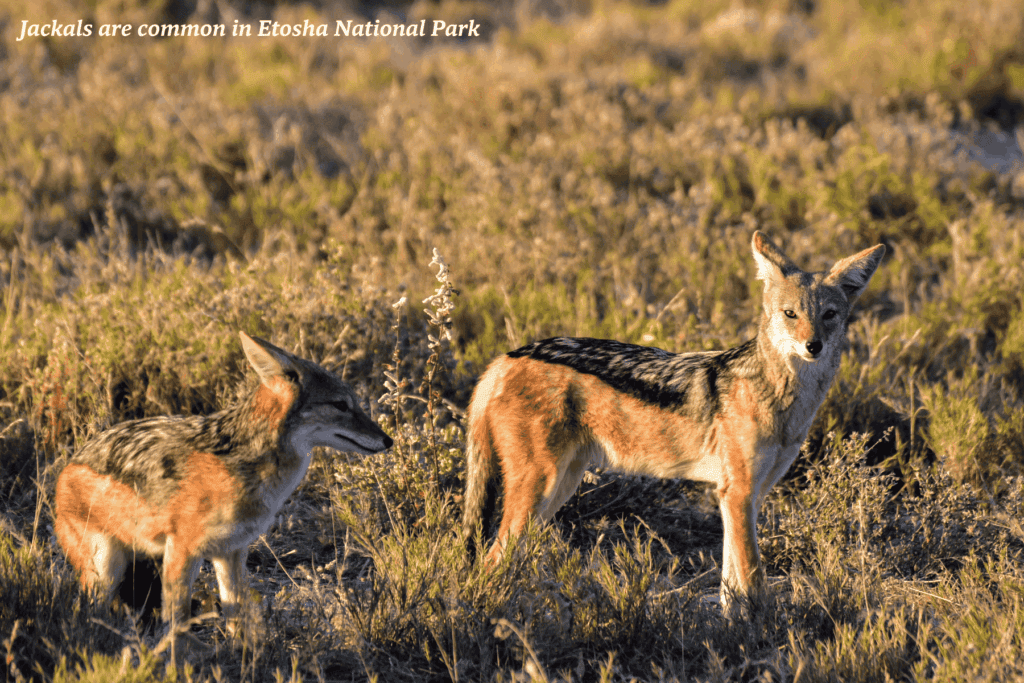
Namibia – roam the desert
Namibia is like a dreamscape: vast tracts of wilderness punctuated by stunning wildlife, eerie rock forms gouged out of the earth by the Fish River, and Sossusvlei’s towering red dunes.
The Namib Desert has plants and animals found nowhere else on earth. Here is the world’s oldest desert, where endemic wildlife has evolved to survive – like the contorted Welwitschia mirabilis that lives for millennia, the elusive golden mole and the unique fog-basking beetles.
Translated as the ‘Place of Mirages’, ‘Land of Dry Water’ or the ‘Great White Place’, Etosha National Park is an apparently endless pan of silvery-white sand, upon which dust-devils play and mirages blur the horizon. One of Africa’s best game reserves, it excels during the dry season when huge herds of zebra and springbok can be seen amid some of the most startling safari scenery in Africa.
Best of all, Namibia’s wilderness is still easy to explore independently. Choose back roads here and you can drive for hours through endless plains, huge mountain massifs and spectacular canyons without seeing a soul. Namibia offers a safari like no other, with dramatic desert landscapes, unique wildlife, and a sense of space and solitude that few destinations can match.
How to do it
Several reliable airlines fly to southern Africa from Europe, with onward connections to Windhoek.
Although much of Namibia can seem deserted, individual places can often be very busy, especially around Easter and from July to the end of October. Many of the accommodations in and around Etosha, Damaraland and the Namib-Naukluft area are fully booked for the peak season as early as 12-18 months ahead, so advanced booking is essential at these times.
Most visitors who come to Namibia for a holiday use the country’s guest farms, lodges and restcamps – often combining them into a self-drive tour around the country. Such trips are quite complex, as you will be using numerous hotels, camps and lodges in your own particular sequence. To arrange everything, it’s best to use a reliable, independent tour operator based in your own country. Namibia changes so fast that detailed local knowledge is vital in putting together a trip that runs smoothly and suits you.
For more information, check out our guide to Namibia.
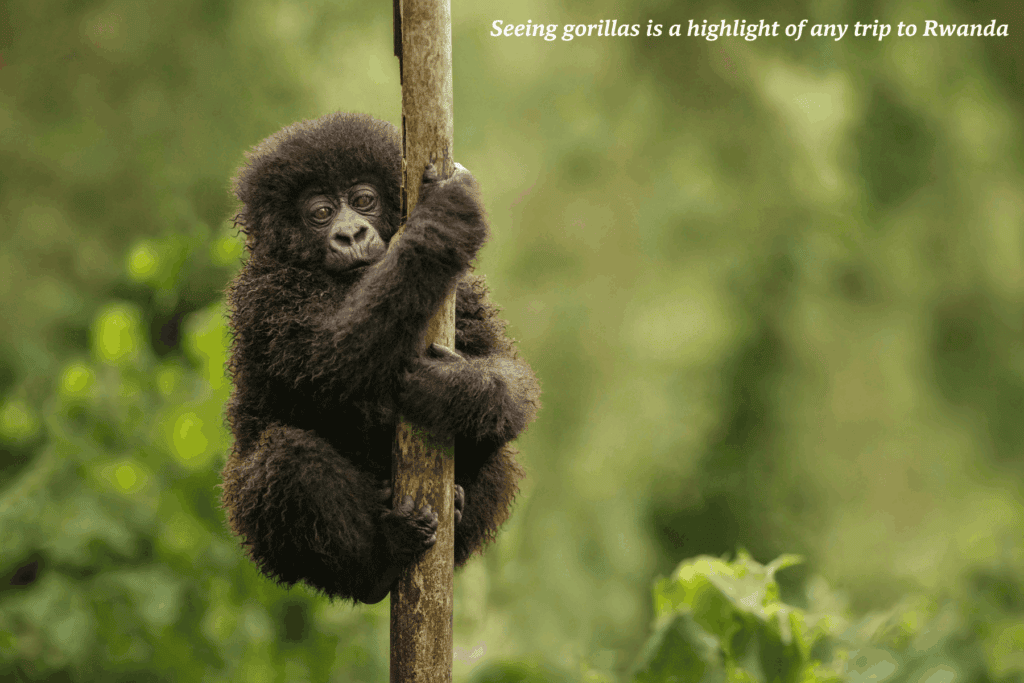
Rwanda – get up close to gorillas
Is there any other wildlife encounter to match tracking mountain gorillas through the thin, moist air of Rwanda’s Virunga Mountains?
Ascending first through fertile volcanic slopes dense with cultivation, you cross the boundary into Volcanoes National Park to follow a narrow footpath into a hushed montane forest composed of impenetrable bamboo skyscrapers, broadleaved herbaceous shrubs and fragrant Hagenia stands. This is nature in the raw: the muddy forest floor scattered with elephant and buffalo spoor while birds and monkeys chatter overhead and spiteful nettles lie waiting in the margins.
Deep in the misty forest, you finally come upon your quarry. It might be a young female attempting to climb a liana, soft black coat comically fluffed-up as it demonstrates the arboreal incompetence of this most sedentary of apes. Or perhaps a barrel-headed silverback, no taller than an average human, but three-time as bulky, delicately shredding a succulent stick of bamboo as it sits peacefully on the forest floor.
No two gorilla encounters can be exactly the same but, as anybody who has looked into the brown eyes of a wild mountain gorilla will confirm, it is always an awesome experience – inspirational, emotional, and profoundly satisfying.
Remember though, Rwanda offers more than just gorillas. Visit Akagera National Park to spot the Big Five, or explore Nyungwe National Park for fantastic chimpanzee trekking.
How to do it
Preparing for a trip to Rwanda will require research, but it doesn’t have to be an overwhelming experience.
The best way to get to Rwanda from the UK is via RwandAir’s daily direct flight from London Heathrow to Kigali, offering the fastest and most convenient connection to the country.
Rwanda can be visited at any time of year. The long dry season, June to September, is the best time for tracking gorillas and for hiking in Nyungwe, since the ground should be dry underfoot and the odds of being drenched are minimal. Note that permits for Volcanoes National Park are limited, so book well ahead to secure your spot. If a tour operator arranges your trip, they will also arrange your gorilla permit and will normally include it in the cost of the trip (or specify it as an extra).
Most reputable tour operators will arrange gorilla visits plus international travel, and the majority offer both scheduled tours and tailor-made trips depending on your preferences.
For more information, check out our guide to Rwanda.
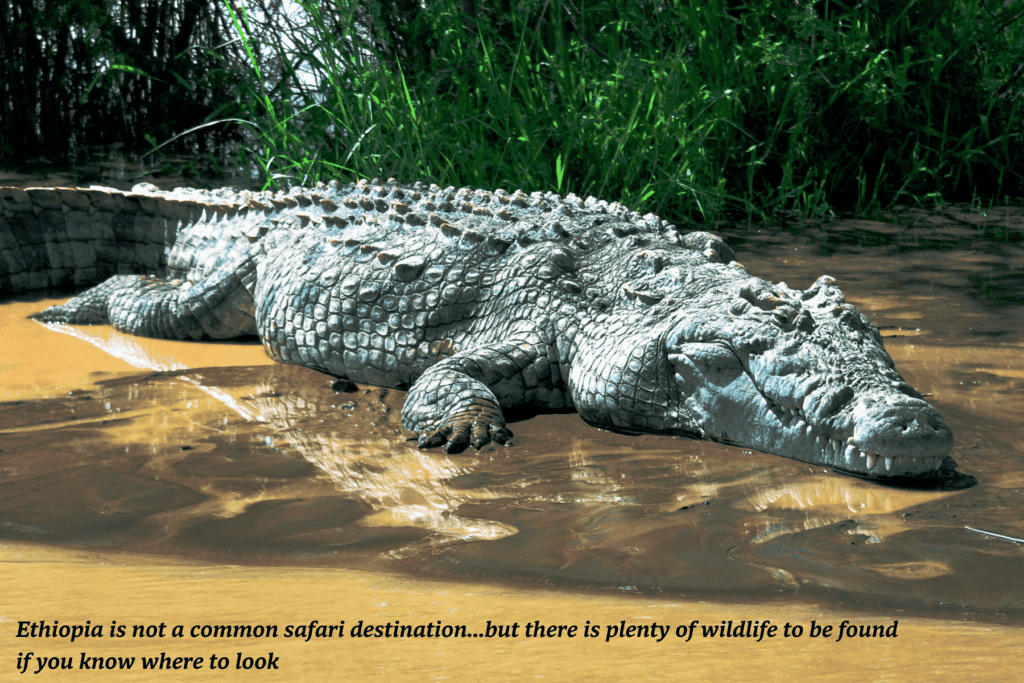
Ethiopia – animals you’ll find nowhere else
Ethiopia is the most misunderstood of African countries, and also one of the world’s most underrated travel destinations.
For wildlife enthusiasts, there’s no denying that it can be a bit of a mixed bag. The once prolific large mammal fauna has been heavily hunted over the centuries, and even those national parks that do protect typical African savannah environments support low volumes of wildlife by comparison with the continent’s top safari destinations.
That said, Ethiopia’s unique transitional geographic location between different regions means its wildlife is a mix of typical African species and some found nowhere else. This has resulted in several unusual animals that exist only in Ethiopia, such as the Ethiopian wolf, Walia ibex, gelada monkey, mountain nyala, and at least 16 unique bird species.
Indeed, whatever Ethiopia might lack in mammalian abundance, it is one of Africa’s key birdwatching destinations, with a national checklist of 920-plus species that incorporates more than 50 Horn of Africa endemics that are logistically difficult or impossible to see anywhere else in the world.
Safari in Ethiopia is ideal for travellers who aren’t chasing the Big Five, but are drawn instead to rare wildlife, dramatic landscapes, and rich cultural heritage. It’s a destination that rewards curiosity, offering unusual species, striking scenery, and a strong sense of identity.
How to do it
All international flights arrive and depart from Bole International Airport in Addis Ababa. Many airlines fly to Ethiopia, including Ethiopian Airlines – Africa’s oldest airline.
The best time for birdwatching in Ethiopia is from November to February, when migratory birds arrive and the weather is cool and dry. Key birdwatching sites such as Bale Mountains National Park and the Rift Valley lakes are accessible via domestic flights from Addis Ababa.
Keep in mind that some areas have basic infrastructure, so travel with a guide or tour operator specialising in Ethiopian safaris to ensure a seamless experience. Many of the endemic species are found in specific regions, so planning your trip with birding hotspots in mind is essential. Ensure that your safari supports conservation efforts to protect these vital ecosystems and their feathered residents.
For more information, check out our guide to Ethiopia.


